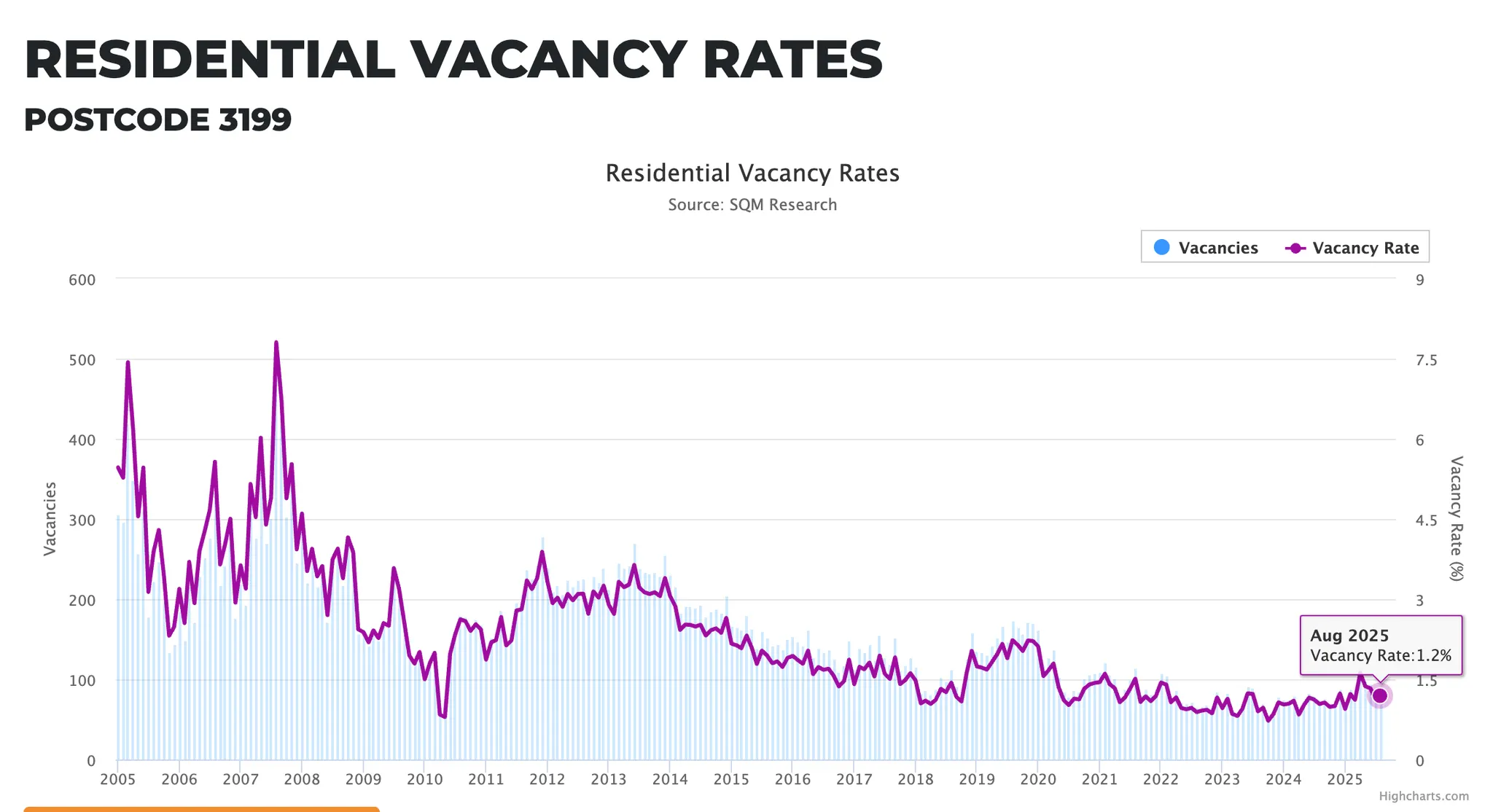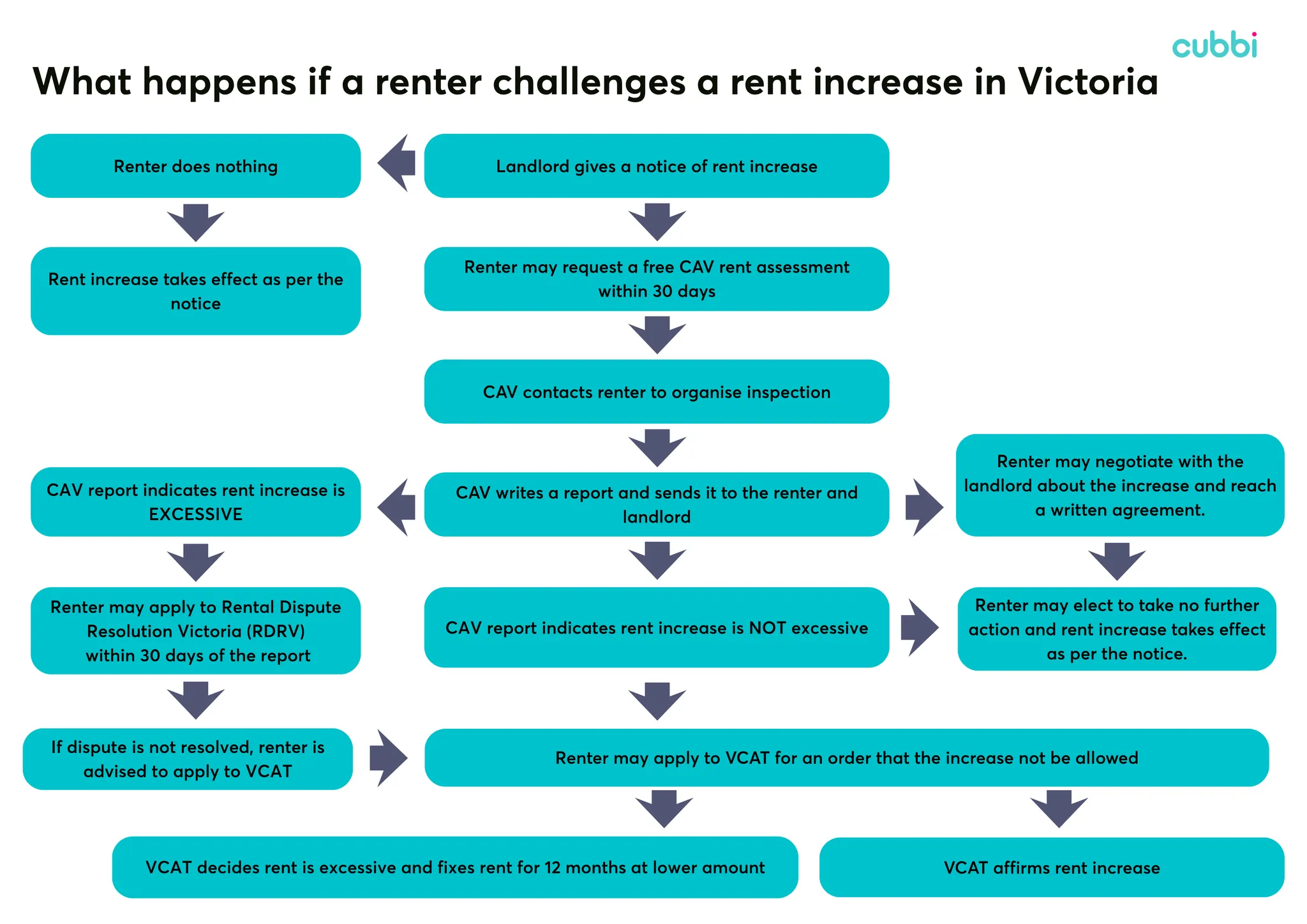
By
Michael Gilbert
•
2
October 2025
For standard rental properties in Victoria (not holiday or rooming rentals).
Yes you can increase the rent during a fixed term lease but only if the lease states a set amount or shows exactly how it will be worked out. You still need to give written notice using the official form which is 90 (increasing from 60) days notice from November 2025.
Rent increases during a fixed term lease must be agreed upfront. You can’t decide halfway through that you want to increase the rent. When a renter signs a fixed term lease, they are locking in that rent amount for the full term. The only way you can increase it during the fixed period is if the lease itself includes a clear rent increase clause that sets out how the increase will be calculated.
The short answer
Use this 3 step guide to estimate the likely change in your local rental market.
Result: that number is your estimated next yearly percentage increase to take effect 12 months into the lease.
Note: costs like land tax or interest rates do not set rents by themselves, but in a tight market they can make owners more likely to push for higher rents.
Example:
For a 4 bedroom house in Frankston VIC 3199 with a current rent of $600 per week.
Past 12 months rent change: 3.8% increase

Vacancy Rate: 1.2% (Under 2% so add 1%)

Supply: There are high rise apartments being built in Frankston but not 4 bedroom houses. For the sake of simplicity, I’ll keep supply at 0%.
Applying the formula:
3.8 + 1 + 0 = 4.8%
Therefore the next rent increase will be a fixed percentage increase of 4.8%.
Note: This 3 step guide is simply to give you an idea of how to think about a percentage increase, this is not a proven science.
The rent will increase once during the fixed term lease, on the date that is 12 months after the commencement of this lease.
The rent increase will be a fixed increase of 4.8%. The rental provider may apply a lower increase, but the rent will not exceed the amount calculated by this formula.
The rental provider will give the required notice in the prescribed form before the increase takes effect.
For a longer lease using the fixed percentage method:
The rent will increase every 12 months during the fixed term lease by 5%. The rental provider may apply a lower increase, but the rent will not exceed the amount calculated by this formula. The rental provider will give the required notice before each increase takes effect.
The rent will increase once every 12 months during the fixed term, with the first increase taking effect 12 months after the commencement date of this lease, and each subsequent increase 12 months thereafter.
Each increase will be calculated by applying the annual percentage change in the [Metropolitan Rent Index (for properties in metropolitan Melbourne)], as published in the Victorian Rental Report by the Department of Families, Fairness and Housing for the [March] quarter immediately before the increase date.
If the [March] quarter report for that year has not been published by the time the notice of rent increase is given, the calculation will be based on the most recent published quarter report available at that time.
If the annual percentage change in the applicable Rent Index is zero or negative, the rent will not decrease. Instead, the rent will increase by the most recent positive annual percentage change reported in the same Rent Index, capped at [5%].
The rental provider must issue a notice of rent increase in the prescribed form and give the required notice period before each increase takes effect.
Notes:
Example: If the rent increase is due to start on 1 October, notice must be given by 1 July. The March quarter report (released in May/June) will normally be available by late June when the official rent increase notice is being prepared.
In Victoria, a rent increase is only valid if you follow the legal process. In short:
👉 See the full step-by-step guide to serving a rent increase notice here for all the details and common pitfalls.
This is a real critical area because a rent increase during a fixed term lease is only allowed if it was agreed in the signed lease. That means when you serve the notice, the “method” you write in must directly match the rent increase term in the agreement. If it doesn’t line up, the notice is invalid under the Act.
Therefore what you write in the Method must refer to the lease clause and show the calculation so the renter can see exactly how it was worked out. Clarity is key.
Examples:
Method: MRI
Metropolitan Rent Index (MRI) as agreed in the lease agreement
The rent increase has been calculated using the annual percentage change in the Metropolitan Rent Index published in the Victorian Rental Report by the Department of Families, Fairness and Housing for the March quarter 2026.
Current rent = $600 per week
Annual percentage change in Rent Index = 3.7%
Calculation: $600 × 3.7% = $22.20
New rent = $622.20 per week
Method: Percentage
Fixed percentage increase as agreed in the lease agreement
The rent increase has been calculated using the fixed percentage method set out in the lease agreement, which states that rent will increase once during the fixed term lease, on the date that is 12 months after the commencement of this lease, by 4.8%.
Current rent = $600 per week
Percentage increase = 4.8%
Calculation: $600 × 4.8% = $28.80
New rent = $628.80 per week
Not if the lease already sets the method. Using comparable properties is the normal way to justify a rent increase at the end of a fixed term or during a periodic tenancy. But during a fixed term lease, the increase method was agreed in the lease itself. In that case, your notice only needs to show the calculation based on that method, you don’t need to list comparables.
One thing to note: even if the method was agreed in the lease, the increase still cannot be excessive. For example, if you agreed on a 5% increase but comparable properties are now leasing for less than your current rent, a 5% increase may be found to be excessive. In that case the renter can challenge it.
👉 Pro tip: Before you or your agent serve the notice, always check 2–3 recent comparable properties. If the increase looks too high, consider adjusting it, this can save creating friction with the renter and potentially dealing with a formal challenge.
Yes, renters can challenge a rent increase if they believe it is excessive, meaning it’s well above the market rate for similar properties. The first step is to request a free rent assessment from Consumer Affairs Victoria (CAV).
CAV will inspect the property, compare it with comparable properties, and issue a report. If the report says the increase is excessive, the renter can take it further through Rental Dispute Resolution Victoria (RDRV) and, if needed, VCAT. If CAV finds the increase is reasonable, the increase usually stands unless the renter still applies to VCAT.
👉 See the flowchart below for the full process.

The law does not set a maximum limit on how far in advance you can issue a rent increase notice. Technically, you could serve it well ahead of the effective date, even at the start of a long fixed term lease, as long as all other rules are met.
That said, I recommend sending the notice closer to the increase date, ideally 3–4 months before (and atleast the legal minimum of 90 days). This keeps the notice fresh in the renter’s mind and aligns with the spirit of the law. The purpose of the notice is to give the renter enough time to plan for the increase, adjust their budget, or challenge it if they believe it is excessive.
Because the law requires it. The Residential Tenancies Act says a rent increase in Victoria is only valid if the renter is given a formal notice in the prescribed form. Even if the increase is written clearly in the lease, you must still serve the notice.
Yes, but only if the increase was written into the original lease agreement. I also recommend making it clear in the property advertisement (for example, “Rent will increase by $30 per week after 3 months”) so there are no surprises for applicants.
Here’s where it gets interesting: the law says rent cannot be increased more than once every 12 months, but it does not specifically prohibit an increase during the first 12 months of a brand new tenancy. This means it is allowed if the lease includes a valid rent increase clause from the start. The clause must state either the exact new rent amount or a clear calculation method (for example, “Rent will increase by 5% after 6 months”).
Important: All other requirements still apply, for example the official rent increase notice must still be served, and the increase must not be excessive compared with the market.
Adding a cap gives renters certainty and makes it less likely VCAT will see the increase as unreasonable if it’s ever challenged. The trade-off is you might limit yourself in a high-growth year and miss out on extra rent. If your priority is renter confidence and securing their buy-in for a long lease, add the cap. If your priority is flexibility and maximising rent, leave it out.
Cubbi’s Assisted Management platform is a follow-the-prompts system designed for self-managing owners. It guides you through every step, from finding tenants and professional screening, to lease signing, rent collection, bill payments, reporting, and more.
It also handles rent increases for you, including recommending an amount based on comparables and preparing the legally required notices. Perfect if you don’t want to pay agent fees but still want things done properly.
👉 Check it out here and save around 70% compared with traditional agents.
Cubbi’s Full Management is a set-and-forget service where everything is done for you, rent collection, inspections, maintenance, lease renewals, and rent increases. All handled with full transparency through the Cubbi platform. It’s perfect if you want the peace of mind of professional management without chasing old school agents.
👉 Join the waitlist today to be first in line when Full Management opens in your area.